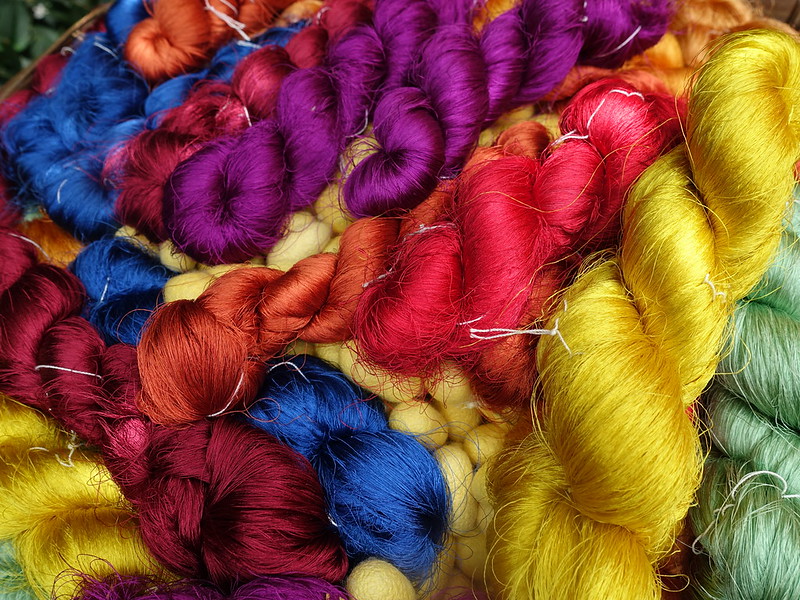
Intricate Japanese Silk
Silk has been a much coveted commodity since it was first developed in ancient China. The Silk Road is a 6,000-kilometer trading route that stretched through regions of the Asian continent, connecting the West and the East.
The ancient trading route was named after the lucrative silk trade during the Chinese Han dynasty (206BCE- 220 CE). Merchants travelled this ancient route while multiple cultures mingled through pilgrims, monks, soldiers and even nomads through the centuries.
Silkworm cocoons.
Silk fabric was initially developed in ancient China with the earliest examples dating back to 3630 BCE, when it was used to wrap the body of a child at the Yangshao site at Xingyang, Henan. Silk was made for the use of Chinese emperors and given out as gifts to others. Gradually its popularity spread as many coveted the intricate beauty, softness, and sheen of the fabric. Silk became a luxury fabric and was much in demand.
The practice of harvesting silk was introduced in Japan in 199 CE when a Chinese man came to the country bringing with him a cluster of silkworm eggs. Japanese silk making techniques were further refined.
It wasn’t long before Japanese silk became widely distinguished for being of the finest quality. In 600 CE, Japanese had to pay taxes in silk. In 701 CE, there was a decree ordering every family to plant a certain number of mulberry trees (their leaves are the primary food of silkworms) based on their socio-economic standing.
Japanese silk fabric.
During the rule of the Tokugawa Bafuku, Japan was largely isolated from foreign trade. Silk in Japan was mainly produced for domestic use. Japanese society was divided into castes, and only men and women from the imperial family, noblemen, priests, and military families were allowed to wear silk. The kimono, long an iconic symbol for Japan, is often made with woven silk. Silk also had other uses such as for fans and parasols.
The Japanese silk making industry has a long history and is deeply ingrained in the country’s culture. One such example is ushikubi tsumugi (pongee, home-spun silk), designated as an Intangible Cultural Property of Ishikawa Prefecture.
The technique was brought to the area of Mt. Hakusan in 1159 CE by members of the Minamoto/Genji Clan who were on the losing side of the Heiji Rebellion (1180-1185). The Tomioka Silk Mill in Gumma Prefecture was added to the UNESCO World Heritage List in June 2014. Considered a factory, it was established in 600 CE to mass-produce and export high-quality silk. Tomioka played a key role in the start of Japan’s modernization.


